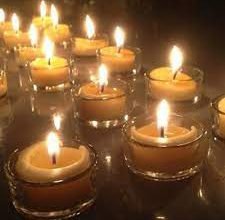News: Brain Bridging with Photographs
The selection of ‘good’ pictures has increasingly become a crucial factor when transmitting news to the recipients. Every day thousands of events are happening and millions of pictures are taken. By choosing photographs for newspapers and magazines, photographic editorial departments want to attract the recipients’ attention, evoke emotions and get them to read their stories. But what exactly is a good picture that meets these expectations? Which criteria are decisive for selecting pictures and what effects of this selection can be measured on the recipients’ side?
Pictures are worth 1,000 words – in the newspaper business that equals about 25 inches of print. Images are one of the most powerful forms of communication.
The read presents the results of how deal of selection and impact of photography introduces the concept of ‘photo news factors’. Applying the traditional news value theory to pictures, photo news factors are defined as selection criteria that, on the part of the communicator, decide whether the press photos are worth publishing. Furthermore, they are assumed to exert an influence on the intensity of attention that a picture arouses.
A classical approach in communication addresses selection processes in the news value theory. It is based on the assumption that issues can be assessed on the basis of a catalog of criteria, the so-called news factors. The resulting news value explains the attention a certain issue attracts in the media coverage.
More recent studies investigated to what extent the news value concept can also serve as an explanation for the selection and perception of the audience, by guiding the recipients’ information processing.
Despite the fact that press photos are an integral part of media coverage, there is a shortcoming, that applies news value theory to photojournalism. This presents a prime study on the selection and impact of press photos. Using the concept of so-called photo news factors, we introduce an approach into empirical research that transfers news value theory from texts to images and thus allows us to investigate the selection.
In the early days of newspaper journalism, the photojournalist’s role was relatively straightforward. Armed with a camera he captured a moment in time – a reality. Back at the newsroom he spent hours in the darkroom mixing chemicals and perfecting his art. The photojournalist emerged with a snippet of reality, ready to show the truth to the public. The development of news photography in the 19th century supported claims by newspapers that they reported events as they happened, objectively.
When we talk about “pictures”, we are usually talking about photographs, but there are other kinds of pictures, too. Good drawings, paintings, graphic work, and events of society when any goodness or cruelty takes place, also work well as news pictures. The idea of employing photographic storytelling is to document life: it is universal and transcends cultural and language bound between societies.
Wise Articulation | The Organic Rehab
People’s Newsroom Mobilization Network
- Usfoor – Family Coach
- The Business Gates – Family Businesses & Climate Change Issues
- Bawarchikhanaa – Family Kitchen & Hygiene
- Mooeeza – Animal, Birds & Aqua Care
- LTA Sense – Medical Care
- Tafsiralahlam – Interpretation Site
- Praise of Plants – Praisers
- The Organic Rehab – Media Direction Lab
- The Home Improvement – Smart Homes
- Iqra – Religious Order Addressors
- Econ Theories – Bureau of Economics
- Webstreets – Web Journalism Bureau
- Component Replacement – Component Solution Alternators
- Aaila – Earlier Heaven Pursuit
- Moral Streets – Moral Story Tellers
- Quloob – Oneirocritic
- Waqt – Script Explanators
- The Virtuoso – Prayer Evangilists
- Khalaq – Educationists
- Almaraf – Tutors

